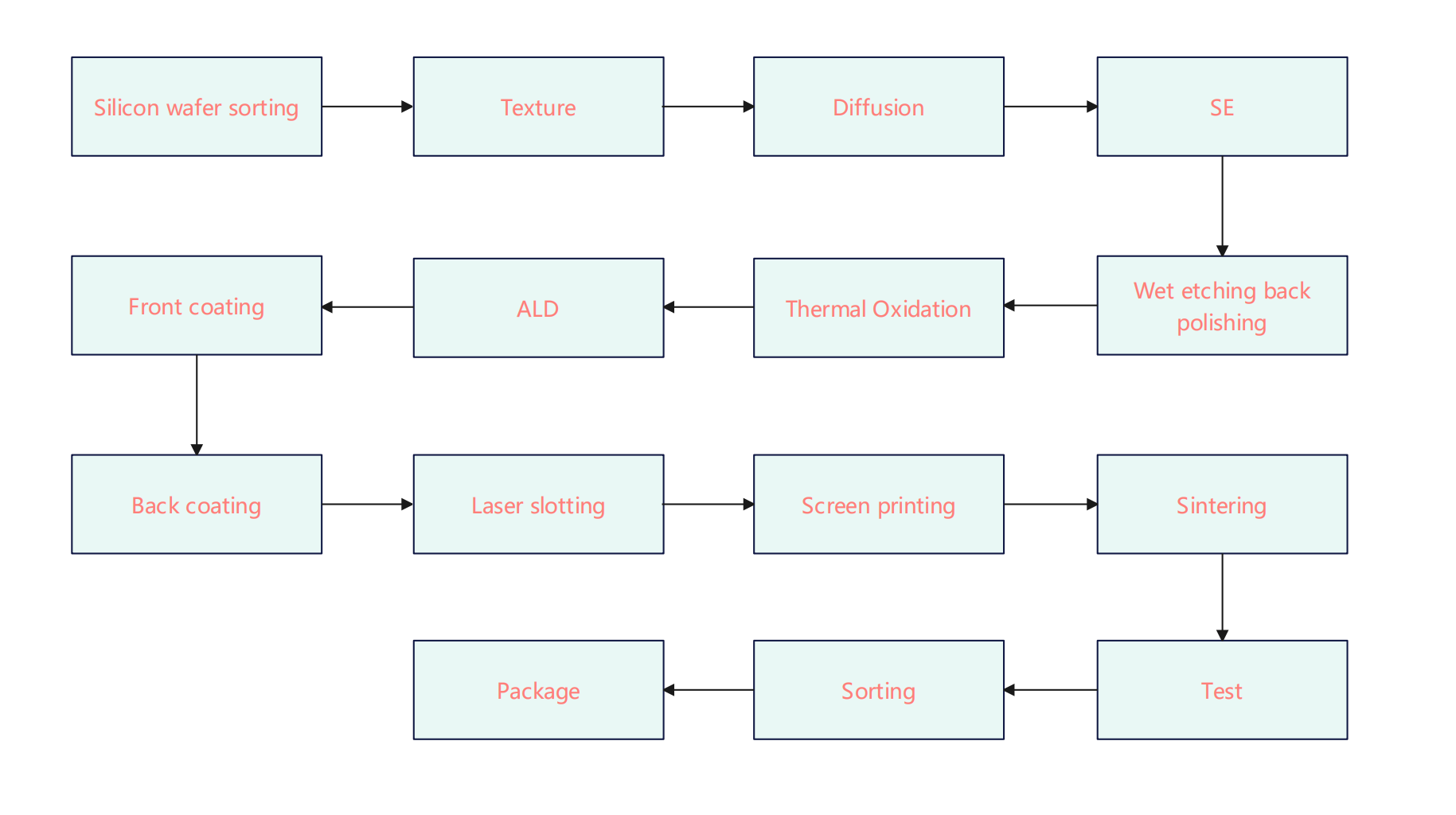Textured wafer or diffusion wafer based on PERC process.
Custom sheet resistance diffusion solar wafer or non-metallized blue wafers are used for the development of metallized silver paste.
Cell type :
P-type PERCThickness :
150±20μmResistivity :
Custom sheet resistanceDimensions :
M2 G1 M6 M10 G12Introduction of PERC Technology
PERC means Passivated Emitter and Rear Contact or Passivated Emitter and Rear Cell .
Traditional cells saw jumps in efficiency when panel manufacturers began putting a front passivation layer to prevent electron recombination at the front panel. Additional bumps in efficiency were achievable by reducing the number of electrons that hit the rear of the panel.
PERC cells take this one step further by placing an additional capping and passivation layer on the rear surface of the photovoltaic (PV) panels, thereby reducing back-side recombination. These layers also help prevent the panels from heating up from unreflected solar radiation. Since panels perform better in cooler temperatures, this helps boost performance as well. PERC cells work in a similar manner but with a few key differences.
The n-type sheet, which is negatively charged, typically contains more atoms that have an additional electron in their outer shell — like phosphorus — to maintain that negative charge.
The positive p-type sheet contains positively charged holes into which those additional electrons can fit. These are usually boron or gallium, which lack one valence electron needed to bond with the silicon around it.
The atoms missing an outer electron — the holes — naturally bond with the atoms that have an extra valence electron. This leaves one additional electron out of the bond, which then gets discharged and collected as electricity.
When solar energy enters the panel, the positive and negative silicon layers naturally rebalance, and the process begins again. While the underlying idea is the same, PERC cells have a few additional layers to prevent the loss of electrons to the outside world.
The M2 G1 M6 M10 G12 dimensions are based on our PERC process
